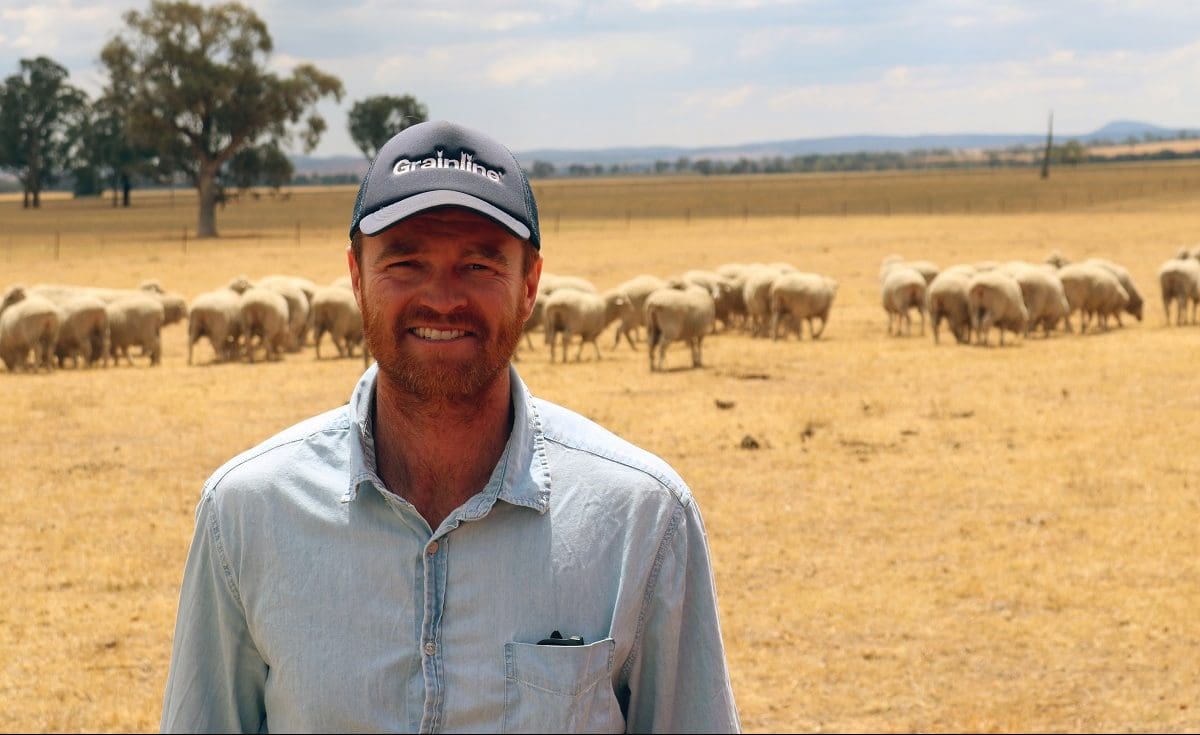
Mixed farmer Nick Kershaw from Iandra Pastoral Estate near Greenthorpe in central west New South Wales. The property took part in CSIRO trials that formed the basis of Growing the Future lecture.
FOCUSING on efficient land and nitrogen use rather than cutting fertiliser application will be key to decreasing the carbon emissions from the Australian grains sector, according to CSIRO researcher Maartje Sevenster.
Dr Sevenster told the CSIRO Growing the Future lecture held at Canberra and online earlier this month that in some cases, increasing fertiliser application resulted in overall better environmental outcomes.
“Our recent work on grains has shown not only that the carbon footprint of Australian commodities like wheat and barley and canola is relatively low compared to other large producing and exporting countries, but also that it could actually on average be reduced by judiciously increasing nitrogen fertiliser application,” Dr Sevenster said.
“It sounds surprising, initially, because we know nitrogen fertiliser production and application is actually one of the main sources of greenhouse gas emissions in these systems, but the thing is we shouldn’t draw conclusions based on that simplistic observation.”
Lifecycle assessment of value
Dr Sevenster said using a lifecycle assessment framework enabled researchers to gather a full picture of the environment impact by looking at a range of factors including the carbon, water and biodiversity footprints and air pollution.
“One of the things I like to point out is that lifecycle assessment is really a bit like a profit-and-loss-account.
“If in a profit-and-loss-account, advertising is your main expense, you wouldn’t necessarily think if you cut advertising, you would make more profit because the bits interact.
“Similarly, for a carbon footprint, if fertiliser is the dominant contribution, which it is, it doesn’t necessarily mean that if you cut fertiliser, the carbon footprint is going to reduce.
“A single snapshot can never really show the complexity of the system.”

Dr Maartje Sevenster
The lessons from exporting canola to the European Union was one example where a lifecycle assessment showed the actual carbon footprint.
“We very quickly realised that the biofuel production, that full production supply chain, could actually result in more greenhouse gas emissions than the fossil fuels that they were trying to replace.
“This was a very early indication of the fact that focusing on a single stage in the supply chain can really be counter-productive and you need that full lifecycle perspective to make sure that you’re not just shifting emissions from A to B.”
Efficient, high yielding systems
Dr Sevenster said instead of focusing on reducing one element or increasing one activity, the industry should be promoting a more efficient use of land and nutrients.
“We do know that a targeted combination of strategic tilling…with good residue and nitrogen management can result in lower carbon footprints, but importantly at the same time, higher soil carbon in those systems and higher yields.
“Higher yields are really very important in this whole debate because, with higher yields, we are also more efficient with our land use.”
She said increasing yields can be a positive for the environment, but such moves need to be done in a nutrient-efficient way.
“Yield is very important…and there are lots of areas around the world where yield can improve compared to what it currently is, and Australia is one of those regions, especially in the dryland areas.
“My observation is that high yield does not necessarily mean the entire system is eco-efficient.
“If high yields are achieved by very inefficient systems, which is possible, then there will be losses of nutrients or substances to the environment which have detrimental impacts.”
Targeted actions
The EU for canola is Australia’s only market that currently requires reporting around greenhouse gas emissions.
This data is based on state-level rather than farm-level assessments.
Dr Sevenster said this system was not the best method if Australian governments or industries want to gather data for national records and future requirements.
She said due to the variability of Australian farming land, individual approaches would be better implemented alongside a results-based system.
“We find increasingly that the one-size-fits-all rules don’t really work across a range of agricultural systems and climates, soil types.
“The optimum nitrogen regime for a particular grain-cropping farm will depend on the soil, the weather, what crop is grown and even what the geography and landscape is that the farm is located in.”
This view was backed by New South Wales crop and sheep farmer, Nick Kershaw, who gave his viewpoint on the issue at the CSIRO event.
Mr Kershaw is part of the management team at Iandra Pastoral Estate near Greenthorpe in Central West New South Wales which is part of an ongoing CSIRO farming-systems trial.
He also said there was no one-size-fits-all approach to sustainable farming, and smaller-scale, on-farm research and lifecycle assessments would help improve the industries understanding of the issue.
Improving fertiliser footprint
Mr Kershaw said he was excited by new developments in fertiliser production, and the prospect that this may bring better environmental outcomes as well as be more cost effective for growers.
He said Australia currently imports about 2.4 million tonnes of urea from China and the Middle East.
“The agriculture industry must look…to where we can improve immediately when it comes to farm inputs,” Mr Kershaw said.
“The building of local manufacturing plants to produce urea fertiliser would seem an obvious and necessary task leading to farmers paying less extortionate prices for a product to be shipped from halfway across the world, and would immediately lower our carbon input into a farming system.”
Dr Sevenster said reducing the “emissions associated with the supply of those nutrients” should be a key focus for the industry, alongside improving weather forecasting and data collection to ensure fertiliser was applied at the right time and optimum quantities.
Dr Sevenster was part of a team of CSIRO researchers who released the Australian Grains Baseline and Mitigation Assessment report in January, which studied the carbon footprint of the grains industry and investigated possible mitigation strategies.

HAVE YOUR SAY